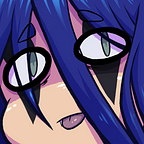Reinventing Real People: The Authors of Bungo Stray Dogs
When your inspiration comes from famous literary works… And the authors who wrote them.
Often when we speak of “reinventing” characters, we have in mind the passing of an old character through many hands, with each hand just slightly tweaking the character to be more like how the new creator sees it. We see this constantly in superhero franchises, as decades-old figures are fitted to the desires of an aging or changing audience. This act is well reflected in Harold Bloom’s writings on poetic misprision, in which one creator finds inspiration from a previous creator, implementing already-used elements into the new writing.
Discussions like these generally involve the adaptations of fictional stories and characters. But, is it possible to apply some form of Bloom’s poetic misprision to the reinvention of real people, of historical figures?
The idea of reimagining historical figures as fictional characters is not unheard of, but when it’s done, they’re usually of characters of “legend”, with their own “lore”; Disney is likely the most famous for this, particularly with their reinvention of the historical figure of Mulan. I, on the other hand, would like to put forth a slightly more obscure story.
Bungo Stray Dogs is a serialized manga by Kafka Asagiri and Sango Harukawa, running from 2012 to present, following a Japanese detective agency. The characters, in proper action manga fashion, all have a special “skill” — some specialized magical ability. However, what might go over the heads of most of its unaware English readers is the nature of the character’s names and abilities.
Each character is an interpretation of a famous author or poet, and their skill is always a direct reference to one of that creator’s works. One of the series’ major characters, for example, shares his name with famous Japanese author Osamu Dazai, and his skill “No Longer Human” is a direct English translation of the title of Dazai’s semi-autobiography, Ningen Shikkaku. Most of the characters also retain traits of their namesakes, as Dazai shares his real counterparts’ affinity for suicide.
Unfortunately, I cannot personally attest to my familiarity with Japanese classical literature, so for the sake of applying Bungo Stray Dog’s characters to Bloom’s model, I will be referencing characters that appeared more recently in the series; specifically F. Scott Fitzgerald, John Steinbeck, and Nathaniel Hawthorne.
Bungo’s characters all seem to fall under Bloom’s kenosis rivisionary ratio, the idea of a creator forming a discontinuity with the precursor. Namely, Asagiri’s characters have no need truly being their authorial namesakes. An author’s existence, their traits, their appearances, their works, are all completely malleable by the author, who is not trying to improve upon the authors themselves, or continue their works. She is simply focused on altering these existing people to fit within the realms of her own story. She is bowing to her source material, while emptying it of what it really was at the same time.
For a concrete example, we can take her reinvention of F. Scott Fitzgerald. Fitzgerald as he was was certainly never the leader of a mafia-styled guild of super-powered individuals, nor did he have a dead daughter; These were inventions of the author for the sake of plot, and character sympathy. But he did lead an opulent lifestyle, desired to please his wife by giving her the same, and more importantly, he’s more than affiliated The Great Gatsby. Bungo’s cast is a kenosis-styled fusion of author and characters, effectively breaking down the influence of both. Fitzgerald, in this form, takes on the money-crazed semi-unhinged style of Gatsby, while retaining his natural fortune and his real wife Zelda. John Steinbeck is the poor farm-working family-man represented in The Grapes of Wrath and Of Mice and Men, even if his actual “The Grapes of Wrath Skill” is an absurd literal representation, where this down to earth man can manipulate tangible grape vines. Nathaniel Hawthorn is no longer a writer, but a man of the church befitting his skill’s namesake, The Scarlet Letter. All this despite the fact that Hawthorne in reality was staunchly anti-puritan in his writing.
Bungo Stray Dogs acknowledges its source material in the most roundabout way possible, by taking its inspiration source and forcing it into a fantastical setting. It seeks to manipulate both author and works to create something entirely new, and almost entirely unrelated.
This use of kenosis is quite ironic, considering Bungo’s own adaptation, that of its 2018 anime, is more-so a use of tessera than anything else. Rather than seeking to distance itself from its influence, it seeks to copy it nearly one for one. Its revision is in its choice of medium; it “completes” the work, or takes it farther, by giving it motion, sound, and color, something impossible in its manga form.
Bungo Stray Dog’s use of unusual inspiration is worth studying, especially for those more familiar with the authors who provide their names and stories for the primary cast. What is most funny in it’s use of kenosis, however, is that while breaking down its inspirations, it breaks down high-culture work as well. What is more emptying for works of literary mastery like The Great Gatsby and The Grapes of Wrath, than to be “brought down” to the level of campy, fantasy action? Regardless, one could argue this use of kenosis has improved on its source material.
After all, I personally have never had so much fun seeing “The Scarlet Letter” plastered across any page.
